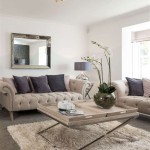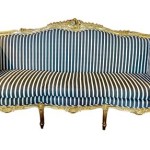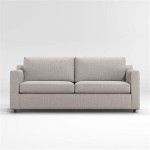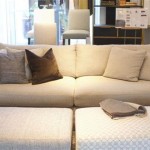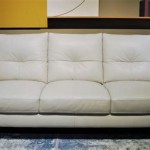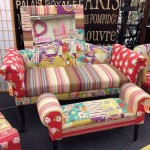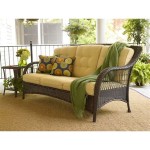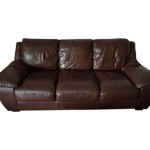Corner Table Solutions for Behind Sectional Sofas
Sectional sofas, renowned for their expansive seating and space-defining capabilities, often present unique challenges when it comes to furnishing the areas behind them. The corner created by sectional pieces frequently becomes an awkward space, prone to collecting dust or feeling visually incomplete. A well-chosen corner table can transform this space, adding functionality, aesthetic appeal, and a sense of deliberate design.
The strategic placement of a corner table behind a sectional offers several benefits. It can serve as a convenient surface for lamps, beverages, books, or decorative items. It can also visually balance the room, creating a more cohesive and inviting environment. Furthermore, a corner table can help to define the spatial boundaries of the seating area, particularly in open-concept living spaces.
Selecting the appropriate corner table requires careful consideration of several factors, including the style of the sofa, the size and layout of the room, and the intended function of the table. Failing to adequately address these considerations can result in a table that appears out of place or impractical.
Key Considerations for Selecting a Corner Table
Choosing the right corner table for behind a sectional involves a thoughtful approach. Several key factors will influence the selection process and ensure the chosen table complements the sofa and the overall room design. These considerations encompass size, style, and functionality.
1. Size and Dimensions: The dimensions of the corner table are paramount. The height should closely match the back of the sectional sofa or be slightly lower. A table that is significantly taller will appear disproportionate and obstruct views across the room. The depth of the table should also be considered, ensuring it does not protrude excessively into the walkway behind the sofa. A general guideline is to choose a table that is roughly one-third to one-half the length of the sectional’s back. This provides sufficient surface area without overwhelming the space.
Prior to purchasing a corner table, accurate measurements of the space behind the sectional are essential. This includes the height of the sofa back, the length of the corner section, and the available depth. It is also advisable to consider the placement of any electrical outlets that may be present in the area. These outlets may influence the size and positioning of the table, especially if lamps or other electrical devices are to be placed on it.
2. Style and Aesthetics: The style of the corner table should harmonize with the design of the sectional sofa and the overall aesthetic of the room. Whether the room features a modern, traditional, minimalist, or eclectic design, the corner table should contribute to a cohesive visual narrative. Consider the materials, finishes, and overall form of the table in relation to the sofa's upholstery, frame, and legs.
For example, a sleek, minimalist sectional in a contemporary living room may be best complemented by a corner table with clean lines, a metal frame, and a glass or solid-surface top. Conversely, a more traditional sectional with rolled arms and tufted cushions could be paired with a corner table crafted from wood with ornate detailing. The goal is to create a visual balance that enhances the overall appeal of the room. Color also plays a crucial role. A corner table with a color that complements the sofa or other accent pieces in the room can tie the whole space together.
3. Functionality and Purpose: Before selecting a corner table, it is vital to determine its intended function. Will the table primarily serve as a surface for lamps and decorative items, or will it also be used for more practical purposes, such as holding beverages, remote controls, or books? The intended function will dictate the features and design of the table. If the table is primarily for decorative purposes, a simple, elegant design may suffice. However, if it is intended for more practical use, consider features such as drawers, shelves, or a built-in charging station.
Tables with built-in storage can be particularly useful for maximizing space and minimizing clutter. Drawers can be used to store remote controls, magazines, or other small items, while shelves can provide a display area for books or decorative objects. A table with a built-in charging station can also be a valuable addition, allowing users to easily charge their mobile devices without having to search for outlets.
Exploring Different Types of Corner Tables
The market offers a wide variety of corner tables designed to suit various needs and preferences. Understanding the different types available can help in making an informed decision. The selection ranges from simple, minimalist designs to more elaborate and functional tables.
1. Console Tables: Console tables are typically long and narrow, making them a suitable choice for behind a sectional. They offer ample surface area for lamps, artwork, and other decorative items. Console tables are available in a variety of styles, from simple, modern designs to more ornate, traditional options. Some console tables also feature drawers or shelves, providing additional storage space.
When selecting a console table, ensure that its height is appropriate for the sectional. A console table that is too tall will appear awkward and obstruct views, while a table that is too short will not provide sufficient surface area. The depth of the console table should also be considered, as it should not protrude excessively into the walkway behind the sofa. It's also important to consider the material the console table is made from. Sturdy materials like wood or metal are ideal, especially if the table will be used to hold heavy items.
2. End Tables: End tables, typically smaller and more compact than console tables, can also be used as corner tables behind a sectional. They are particularly well-suited for smaller spaces or when a more minimalist look is desired. End tables are available in a variety of shapes, including square, round, and rectangular, allowing for flexibility in placement and design.
End tables often come with additional features, such as shelves or drawers, which can be useful for storing books, magazines, or other small items. When selecting an end table, consider its height in relation to the sectional. The height should be similar to the sofa's back to create a balanced look. The style of the end table should also complement the overall design of the room, ensuring a cohesive and visually appealing aesthetic.
3. Floating Shelves: Floating shelves offer a unique and space-saving alternative to traditional corner tables. They can be mounted directly to the wall behind the sectional, providing a surface for lamps, books, or decorative items without taking up valuable floor space. Floating shelves are particularly well-suited for modern or minimalist living rooms where a clean and uncluttered look is desired.
When installing floating shelves, it is important to ensure that they are securely mounted to the wall. Use appropriate hardware and follow the manufacturer's instructions. The number and size of the shelves should be determined based on the available space and the intended use. It is also important to consider the weight capacity of the shelves to avoid overloading them with heavy items. Floating shelves can be arranged in a variety of configurations, allowing for customization and creativity.
Optimizing the Space and Style with a Corner Table
Beyond the selection of the corner table, its placement and styling are critical to achieving the desired aesthetic and functionality. Careful attention to detail can transform an otherwise overlooked space into a focal point in the room.
1. Placement and Spacing: The placement of the corner table should be deliberate and strategic. Ensure that the table is positioned in a way that complements the flow of traffic in the room. Avoid placing the table in a location that obstructs walkways or creates a tripping hazard. The distance between the table and the sectional should also be considered. A table that is too close to the sofa can feel cramped, while a table that is too far away may not be easily accessible.
Consider the placement of electrical outlets when positioning the corner table. If lamps or other electrical devices are to be placed on the table, ensure that there is an accessible outlet nearby. The use of extension cords should be minimized to avoid creating a potential safety hazard. If necessary, consider installing additional outlets or using a power strip with surge protection.
2. Lighting Considerations: A well-placed lamp on a corner table can provide both ambient and task lighting. Choose a lamp that complements the style of the room and provides the appropriate amount of light for the intended use. A taller lamp can provide more general illumination, while a smaller lamp can be used for reading or other tasks. Consider the color temperature of the light bulb to create the desired mood. Warmer light can create a cozy and inviting atmosphere, while cooler light can be more stimulating.
In addition to a table lamp, consider incorporating other lighting elements into the corner area. A floor lamp placed near the sectional can provide additional illumination and create a more layered lighting scheme. Wall sconces can also be used to add visual interest and provide accent lighting. The combination of different lighting sources can create a more dynamic and inviting space.
3. Styling and Decor: The styling of the corner table is an opportunity to personalize the space and create a visual focal point. Incorporate decorative items that reflect individual tastes and interests. Consider using a combination of textures, colors, and shapes to create a visually appealing arrangement. Books, vases, candles, and picture frames are all excellent choices for styling a corner table.
Balance is key when styling a corner table. Avoid overcrowding the table with too many items, as this can create a cluttered and overwhelming look. Instead, focus on curating a few carefully selected items that complement each other and the overall design of the room. Consider using a tray or basket to group smaller items together and create a more cohesive look. Incorporate elements of nature, such as plants or flowers, to add freshness and vitality to the space.
In summary, strategically selecting and styling a corner table for behind a sectional sofa can significantly enhance the functionality and aesthetic appeal of a living space. By carefully considering the size, style, and intended function of the table, and by paying attention to placement, lighting, and decor, it is possible to create a corner area that is both beautiful and practical.

Riki S Design For That Corner Behind The Section Of Couch Diy

And Easy Sofa Table Diy For Anyroom Viraldecorations Ev Için Mobilya Dekorasyonu

Corner Sofa Tables Ideas On Foter Diy Table Decor

Easy Shelf For That Wasted Corner Space Behind A Sectional Couch Decor Table Diy

Walnut Framed Sectional With Built In Corner Table Mcm Sofas Sectionals Loveseats For Sweet Modern Akron Oh

Space Saving Corner Furniture Finds Decoist

Shelves Behind Sectional Home Decor Living Room

Shelf Behind Couch 8 Inches Wide By 10 Feet Long Sofa Wall Home Theater Rooms Diy Apartments

Tribesigns 70 9 Inches Extra Long Console Table L Shaped Corner Sofa Decorating Behind

Edward Wormley Sectional Sofa And Table At 1stdibs Corner Behind Couch For

